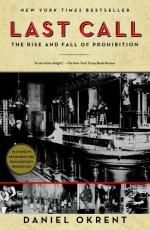|
This section contains 428 words (approx. 2 pages at 300 words per page) |

|
The nation changed dramatically after the Civil War. The population grew rapidly and the landscape became more urbanized. Large numbers of people in the country abandoned their agricultural roots to move into cities where rapid industrialization offered jobs. There they found life to be different and oftentimes harsh. Drinking increased substantially among the working class. Long work hours for little pay drove them to seek retreat in friendly saloons that seemed to spring up on every city block. In post–Civil War Chicago, for example, there were more saloons than there were grocery and dry good stores combined. In 1887, Senator William Windom delivered an address describing the conditions he had observed in American cities:
Every plausible temptation and solicitation that trained talent can suggest are used to entrap the young, the ignorant, the toiling, the homeless, with the knowledge that a...
|
This section contains 428 words (approx. 2 pages at 300 words per page) |

|




